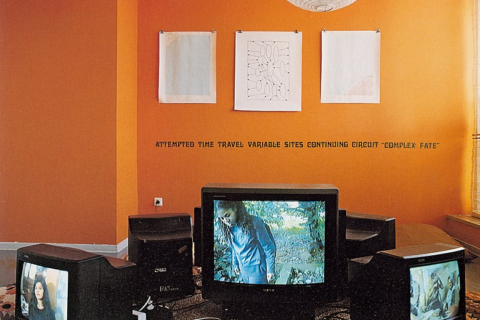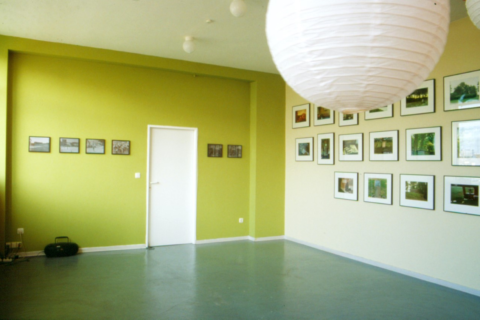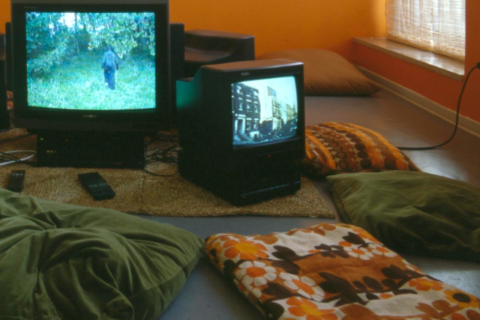Renée Green Übertragen Transfer
09/11/1996 – 30/12/1996

Renée Green
Exhibition view, 1996
„Übertragen/Transfer“
Galerie Christian Nagel, Cologne
Exhibition view, 1996
„Übertragen/Transfer“
Galerie Christian Nagel, Cologne
Exhibition view, 1996
„Übertragen/Transfer“
Galerie Christian Nagel, Cologne
Exhibition view, 1996
„Übertragen/Transfer“
Galerie Christian Nagel, Cologne
Press Release
The background for Renée Green's exhibition ‚Transfer' was a complex historical scenario that the artist reconstructed from two events on the Kent State Ohio University campus. In January 1970 the most important American land artist Robert Smithson was invited by the students to realize a larger earth sculpture. A project that was exceptional at the time and has not yet been done. Smithson discovered on the site a partly collapsed shed, which he covered with tons of earth by bulldozers. He named it "Partially Buried Woodsheet". There seemed to be an open minded atmosphere at Kent State University. But when on April 25, 1970 Richard Nixon ordered an invasion of Cambodia to attack fleeing Viet Cong, there was vigorous resistance at Kent State University, so the authorities decided to order the National Guard on campus. On May 2, the building in which the reserve officer was housed was burned down and the extinguishing work was hindered by the students cutting the fire hoses and throwing stones. Two days later, an unauthorized protest rally took place, a turmoil answered by tear gas. The National Guard went up a hill and had the students behind them. Suddenly the soldiers turned around and opened fire for no reason or danger. The FBI counted 67 shots in 12 seconds into the crowd. Four students died, eight others were seriously injured. None of the perpetrators was ever brought to justice, everyone involved was acquitted. The state paid USD 675,000 as a settlement. Eight million students organized a major dispute and protest across the country. The American society continued to fall apart.
Renée Green displayed the events on five monitors, both the historical reports and her own independent in situ investigation during a visit to Kent State University, researching and filiming on campus, including footage of 'Partially Buried Woodsheet'. There were many references to the aesthetics of the 1970s in the installation. The walls were painted orange and green, sisal carpets and pillows and other textiles with flower power patterns. A large photographic work with vintage photographs and pictures she took during her visit completed the impressive work, that was boughtt by Kaspar König for the Museum Ludwig collection.



